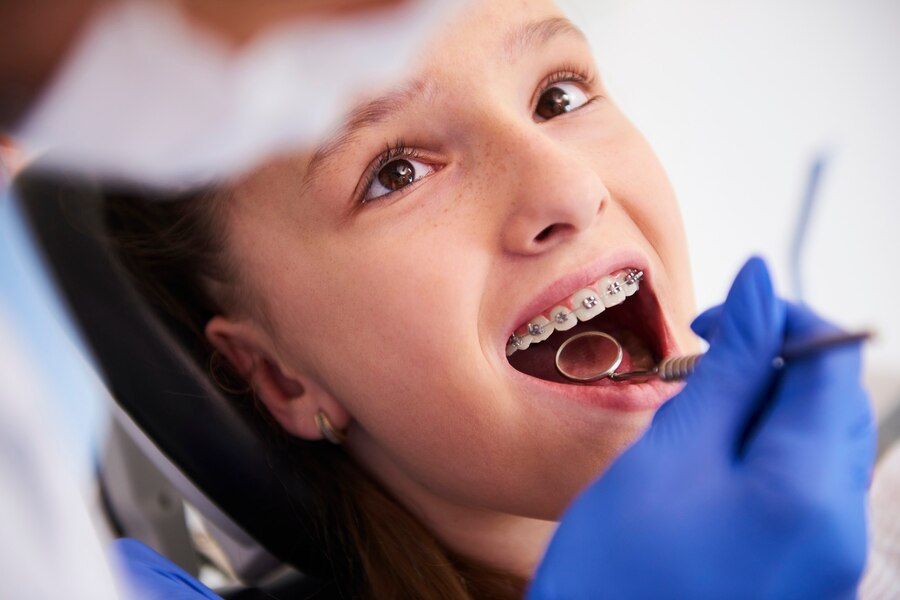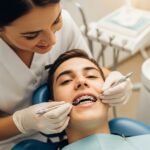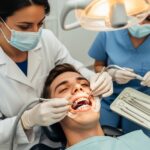Braces have become an essential part of orthodontic care, helping individuals of all ages achieve a healthier, straighter smile. The question of when to get braces is common for parents and individuals considering treatment. Understanding the best age for braces can lead to better outcomes and a more comfortable treatment experience. In this comprehensive guide, we will explore the most suitable age for braces and why timing matters in orthodontic care.

Understanding Orthodontic Treatment
Orthodontics is a branch of dentistry that focuses on diagnosing, preventing, and treating dental and facial irregularities. Braces are the most common form of orthodontic treatment, used to align teeth, fix bite issues, and improve overall oral health. Treatment often starts during childhood or adolescence, but adults can also benefit from braces. Knowing when to begin can help ensure a smoother and faster treatment journey.
Why Age Matters for Braces
The age at which a person gets braces can significantly impact the effectiveness of treatment. Children’s and adolescents’ teeth and jawbones are still growing, making them more responsive to orthodontic interventions. Adults, on the other hand, may experience a longer treatment time because their bones have fully developed. Early intervention can also prevent more serious issues later in life.
Best Age Range for Braces
Ages 7-10: Early Assessment
The American Association of Orthodontists recommends that children have their first orthodontic evaluation by the age of seven. At this age, the child’s mouth has a mix of baby teeth and permanent teeth, which allows the orthodontist to identify potential problems early. Early assessments can reveal issues like crowding, crossbites, or jaw misalignment. Although braces may not be needed immediately, this initial check-up sets the stage for future orthodontic care.
Ages 11-14: The Most Common Age for Braces
The ideal time to get braces is usually between the ages of 11 and 14. During these years, most of the permanent teeth have erupted, but the mouth and jaw are still growing. This period is optimal for orthodontic treatment because it allows for easy manipulation of the teeth and jaw. Braces can guide the teeth into their correct positions more effectively when the growth rate is at its peak.
During this age, children and teens are also more adaptable to the changes that come with wearing braces. They tend to recover faster from any discomfort and can easily adjust their oral hygiene routines to accommodate braces. Spring Hill Orthodontics provides customized braces options that cater to the specific needs of pre-teens and teenagers, ensuring effective results and a comfortable experience.
Ages 15-18: Late Teen Years
Teens between the ages of 15 and 18 can also successfully undergo orthodontic treatment, although they may experience a slightly longer treatment period compared to younger adolescents. The jaw and teeth are still growing, but at a slower rate. Braces can still be effective, but it’s essential to follow the orthodontist’s instructions closely to achieve the best results.
At this stage, teenagers may become more conscious about their appearance. Clear braces or Invisalign might be preferred options for those who want a more discreet treatment. Spring Hill Orthodontics offers a variety of braces that cater to both aesthetic preferences and orthodontic needs, providing solutions that fit seamlessly into a teenager’s lifestyle.

Braces for Adults: Is It Too Late?
Many adults believe that they have missed their chance for braces, but this is not the case. Orthodontic technology has advanced significantly, making it possible for adults to achieve excellent results. Adults may need braces for various reasons, such as correcting bite issues, closing gaps, or aligning crooked teeth that were never addressed in their youth.
Benefits of Getting Braces as an Adult
Adults who choose braces can still experience a range of benefits, including improved oral health and a boost in self-confidence. However, the treatment time might be longer because the jawbone has stopped growing, making it less malleable. Orthodontists might recommend other corrective procedures alongside braces to achieve the desired results in adults.
Braces for adults come in a variety of styles, from traditional metal braces to clear aligners like Invisalign. The choice depends on the individual’s needs, budget, and preference for a less visible treatment option.
Factors Influencing the Best Age for Braces
1. Growth and Development
One of the main factors influencing the best age for braces is the growth and development of the jaw and teeth. Orthodontic treatments rely on the movement of teeth within the bone, which is easier when the jaw is still growing. Early teens are at an advantage because their bone structures are more flexible.
2. Severity of Dental Issues
The complexity of the dental problem also plays a role in determining the best time for braces. Severe bite issues or misalignment might require treatment as early as possible to prevent complications. For minor corrections, waiting until more permanent teeth are in place could be more appropriate.
3. Emotional Readiness
Wearing braces requires a commitment to maintaining oral hygiene and attending regular appointments. Children and teenagers should be emotionally ready to handle the responsibilities that come with braces. Being prepared can make the treatment process smoother and more effective.
Preparing for Braces: What to Expect
Before getting braces, it’s essential to consult with an orthodontist to understand the process. During the consultation, the orthodontist will assess the teeth, jaw, and facial structure using X-rays and models. This evaluation helps in creating a personalized treatment plan.
The Fitting Process
The fitting process is straightforward and usually painless. The orthodontist will place brackets on the teeth and thread a wire through them to create the framework that will guide the teeth into alignment. Regular adjustments are needed to ensure the teeth move correctly.
Braces Care Tips
Maintaining proper care of braces is crucial for achieving the best results. Here are some essential tips for taking care of your braces:
- Brush After Every Meal: Make sure to brush your teeth after every meal to remove food particles that can get trapped in your braces.
- Floss Regularly: Use a floss threader or special orthodontic floss to clean between your teeth and braces.
- Avoid Sticky Foods: Sticky and hard foods can damage the brackets and wires, leading to delays in treatment.
- Attend Regular Appointments: Regular check-ups with the orthodontist are essential to track progress and make necessary adjustments.
Spring Hill Orthodontics emphasizes the importance of consistent care and offers guidance on maintaining good oral hygiene throughout the treatment process.
The Importance of Retainers After Braces
After braces are removed, wearing a retainer is crucial to keep your teeth in their new positions. Without a retainer, teeth can shift back to their original places over time. The orthodontist will recommend a retainer type that fits your needs, either a removable or permanent one.
Overcoming Myths and Misconceptions About Braces
Braces are often surrounded by myths and misconceptions that can make individuals hesitant to start orthodontic treatment. Addressing these misunderstandings is important for both parents and individuals considering braces for themselves or their children. Let’s explore some common myths and the facts behind them to clear up any confusion.
Myth 1: Braces Are Only for Kids and Teens
One of the most common misconceptions is that braces are exclusively for children and teenagers. The truth is that orthodontic treatment is suitable for people of all ages. While it’s true that early teens might experience the most benefits due to their growing jawbones, adults can still achieve excellent results with braces. With modern orthodontic technology, even adults in their 40s, 50s, and beyond can correct their smiles.
Myth 2: Braces Are Painful
Many people believe that braces are extremely painful and uncomfortable. While there may be some initial discomfort as your mouth adjusts to the braces, the pain is usually minimal and temporary. Today’s braces are designed with patient comfort in mind. If discomfort does occur, it can often be managed with over-the-counter pain relievers. Regular follow-ups with Spring Hill Orthodontics ensure that adjustments are as smooth as possible, reducing any potential discomfort.
Myth 3: Metal Braces Are the Only Option
Traditional metal braces are the most common, but they are not the only choice. Advances in orthodontic treatment have introduced various types of braces, including ceramic braces, lingual braces, and clear aligners like Invisalign. These options are more discreet and comfortable, allowing patients to choose a treatment that fits their lifestyle. Discussing all available options with Spring Hill Orthodontics can help you make an informed decision that aligns with your needs.
Myth 4: Braces Will Interfere with Sports and Music
Wearing braces doesn’t have to mean giving up on your favorite sports or musical instruments. While it’s true that you may need to wear a mouthguard during contact sports to protect your braces, you can still participate without any significant restrictions. For musicians, especially those who play wind instruments, there may be a short adjustment period, but it won’t stop you from playing.

The Role of Technology in Modern Orthodontics
Orthodontic treatment has come a long way thanks to technological advancements. Innovations in the field have made braces more comfortable, less noticeable, and more efficient. Let’s look at some ways technology has transformed orthodontics and improved patient experiences.
Digital Impressions and 3D Imaging
Gone are the days of messy molds and uncomfortable impressions. Modern orthodontics utilizes digital imaging and 3D technology to create accurate models of your teeth. These digital impressions provide a clearer picture for the orthodontist, allowing for a more precise treatment plan. This technology also helps patients visualize the expected results, making the journey toward a perfect smile more transparent and predictable.
Self-Ligating Braces
Self-ligating braces are a revolutionary development in orthodontics. Unlike traditional braces that use elastic bands to hold the wire in place, self-ligating braces have a special clip that reduces friction and pressure on the teeth. This allows for smoother and quicker tooth movement, potentially reducing treatment time and the number of adjustments needed.
Clear Aligners: An Alternative to Traditional Braces
Clear aligners like Invisalign have gained popularity due to their discreet appearance and convenience. These aligners are custom-made, removable trays that gradually shift teeth into place. They are ideal for adults or teens who prefer a less noticeable orthodontic treatment. With Spring Hill Orthodontics, patients can explore the benefits of clear aligners, including their comfort and ease of use.
Psychological and Social Benefits of Braces
Orthodontic treatment is not just about achieving straight teeth; it also significantly impacts a person’s self-esteem and overall well-being. Let’s delve into the psychological and social benefits of getting braces at the right age.
Boosting Self-Confidence
A straight smile is often associated with confidence and positive self-image. For teenagers, wearing braces during the ideal age can mean fewer insecurities related to crooked teeth or misaligned jaws. Adults who undergo orthodontic treatment can also experience a renewed sense of confidence, leading to better interactions in both personal and professional settings.
Enhancing Oral Health Habits
Getting braces requires a commitment to maintaining good oral hygiene. This responsibility encourages both kids and adults to develop better brushing and flossing habits. Those who take care of their teeth during their orthodontic journey are more likely to continue these habits after the braces come off, resulting in long-term oral health benefits.
Reducing the Risk of Future Dental Problems
Correcting dental issues early on can prevent more serious problems down the road. Misaligned teeth can lead to excessive wear, difficulty chewing, and even jaw pain. By addressing these issues with braces, you reduce the likelihood of requiring extensive dental work in the future. This preventive approach not only saves money but also promotes overall oral health.
Early Orthodontic Treatment: What Parents Should Know
Parents often wonder when is the right time to take their child for their first orthodontic evaluation. Understanding the signs that indicate a need for early intervention can help parents make informed decisions about their child’s dental care.
Signs Your Child Might Need Braces
There are several indicators that suggest your child might benefit from early orthodontic evaluation:
- Early or late loss of baby teeth
- Difficulty chewing or biting
- Mouth breathing or thumb-sucking habits
- Crowded or misplaced teeth
- Jaw that shifts or makes sounds
If you notice any of these signs, it is advisable to consult with an orthodontist for a thorough evaluation. Early detection can make a significant difference in the treatment process and outcome.
Interceptive Orthodontics
Interceptive orthodontics refers to treatments that aim to correct problems early before they develop into more severe issues. These treatments can include appliances like expanders or partial braces to address jaw alignment or space issues. Early intervention can sometimes reduce the need for extensive treatments later on.
The Cost of Braces: Investing in Your Smile
The cost of braces can vary widely depending on the type of braces, the complexity of the case, and the length of treatment. Many people view braces as an investment in their health and well-being, and it’s important to understand what factors influence the overall cost.
Factors Influencing the Cost of Braces
- Type of Braces: Traditional metal braces are usually the most affordable option, while ceramic braces and clear aligners like Invisalign tend to be more expensive.
- Treatment Duration: Longer treatment times may result in higher costs due to more frequent orthodontist visits and adjustments.
- Complexity of the Case: More severe dental issues require more time and resources, which can increase the cost.
Insurance and Payment Plans
Many dental insurance plans cover a portion of the cost of braces, especially for children and teenagers. It’s also worth exploring payment plans or financing options that make orthodontic treatment more affordable. Spring Hill Orthodontics offers flexible payment plans to help patients manage the costs while receiving top-notch care.
Conclusion
The best age for braces varies depending on individual needs, but starting treatment between the ages of 11 and 14 is often ideal for most children. Early evaluations, regular check-ups, and proper oral hygiene can make a significant difference in the outcome of orthodontic treatment.
Whether you’re considering braces for your child or yourself, it’s never too late to achieve a healthier, straighter smile. At Dietrich & Kelso Orthodontics, we are committed to providing personalized orthodontic care for patients of all ages, helping you find the best path to a beautiful smile.
For more information on orthodontic treatments, including the latest options available, visit Dietrich & Kelso Orthodontics and let us guide you on your journey to perfect oral health.
![Best Age for Braces [Kids, Teenagers & Adult Guide 2025]](https://dkosmiles.com/wp-content/uploads/2024/10/beautiful-girl-sitting-dentist-s-office_1157-23498.jpg)


